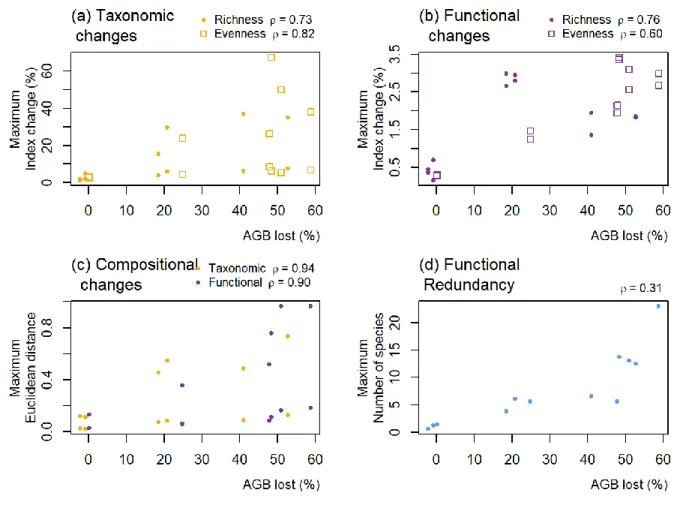Diverging taxonomic and functional trajectories following disturbance in a Neotropical forest
Texte intégral
Figure




Documents relatifs
While species richness was not affected by forest exploitation, total and commercial biomass as well as seed size of animal-dispersed species decreased 27 years
patterns in species turnover (i.e., change in species composition, or species replacement) along environmental gradients: peat bog plant species are divided into two clusters
We investigated the taxonomic and functional diversity patterns of the aquatic macroinvertebrate communities in tank bromeliads by comparing those found in a small Neotropical city
Pteronymia alida Pteronymia nsp3 Pteronymia teresita Pteronymia lonera Pteronymia thabena Pteronymia inania Pteronymia dispar Pteronymia euritea Pteronymia carlia
In 2008, 13 species appeared in the experimental plots in the centre zone (compared with seven in the control plots), seven species in the intermediate zone (compared with nine
Pie-chart represent the relative abundance of reads in function of each ecosystem (marine water: dark blue, freshwater: cyan, soil: orange).. (For interpretation of
for pre-disturbance aboveground carbon stocks ( Avitabile et al., 2016 ); WorldClim (RRID:SCR_010244) ( Hijmans et al., 2005 ) for annual precipitation and seasonality of
We studied the relationships between spiders, the epiphytic tank bromeliad, Aechmea bracteata, and its associated ants in an inundated forest in Quintana Roo, Mexico, during a

